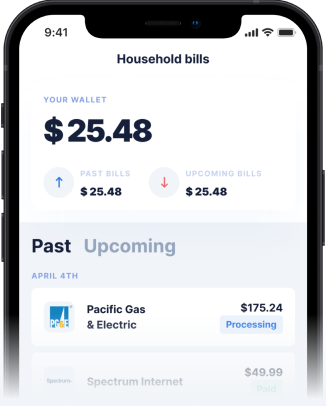Easy Tips To Build Up Your Savings
Saving money is an essential component of achieving your short and long-term financial goals. Unfortunately, it can be hard to get started, especially if you don’t have a plan. If you’re wondering how you can start saving money to grow your wealth, several different strategies may help you succeed.
Why Is It Important to Set Aside Part of Your Income?
Spending $5 here or $10 there might not seem like a huge deal, but it can have a major impact on your savings in the long run. One of the major cornerstones of achieving wealth is understanding how money grows over time. Although it’s difficult to see the value in saving a mere $5 today, when you realize how much it can grow over time, you might change your tune.
Setting aside part of your income today can turn into major gains in a few years. That means with a little bit of discipline and planning, you can secure a strong financial future for yourself, open up more opportunities for savings and investments, and, ultimately, accumulate wealth. In short, saving money will transform the way you handle your finances and increase your overall wealth.
Tips for Beginners to Boost Their Savings
Whether you’re saving for a house or you want to be more financially secure, a structured savings plan can help you achieve your goals. Follow these tips to get started.
1.Record Your Expenses
First, before you can start saving, it’s helpful to know exactly how much you’re spending each month. Seeing where your money goes will help you determine where you’re overspending and how you can cut back to save. If overspending has been a problem for you in the past, taking the time to record and track your expenses will also help you gain more control over your finances.
To figure out how much you’re spending, keep track of every purchase you make. Whether you write it all out on a sheet of paper or you use a free budgeting tool, make sure you have a comprehensive list. Then organize your list into categories, such as groceries, gas, mortgage, bills, etc.
2. Set a Budget
Once you know how much you spend monthly, you can create a budget for yourself. Creating a budget allows you to plan your spending based on how much money you bring in. That way, you don’t overspend, and you can take care of essential bills more easily. As you lay out your budget, include a category for saving so it’s built into your monthly expenses. If you’re struggling to find the money to save, you may need to cut back on some of your regular expenses to create more wiggle room in your budget.
A few easy ways to do this are:
- Canceling unnecessary subscriptions
- Cooking at home more instead of eating out
- Limiting impulse purchases (wait a few days before you decide to buy)
- Finding free or low-cost entertainment options
- Trying a spending freeze for a set amount of time to eliminate unnecessary spending
- Buying used goods instead of new ones
- Picking up a part-time job or a side gig
If you have a significant amount of debt, interest charges can make it very difficult to save. In that case, you should focus on paying off your debt first, which will free up more money to save.
3. Add Money to Your Savings Account
The amount of money you save each month should be based on your income, lifestyle, and needs. At first, you may not be able to save very much, but a little bit is better than nothing! In time, you should aim to save up to 15% to 20% of your income. In general, experts recommend having three to six months of living expenses saved in an account you can access whenever it’s necessary. To make this process easier, you can automate transfers to your savings account so you don’t even have to think about it.
If you don’t have a savings account, you can easily open one with your current bank via online banking, or you can walk into a bank branch to do it.
4. Set Financial Goals
One of the best ways to save money is to think about what you’re saving for and set goals. Whether you want to buy a car or pay off debt, setting financial goals can help. Categorize these into short-term goals (one to three years) and long-term goals (four or more years), estimate how much money you’ll need, and determine how long it might take you to save it.
Saving for several years can sometimes feel like an arduous process. To offset this, set a small short-term financial goal that you can reach easily and quickly. Enjoying the success of your saving process can help you stay motivated to continue saving for long-term goals.
5. Use the Right Tools
If you feel overwhelmed about the savings process, a financial app can help you stay organized. Doing everything manually on your own can be overwhelming. But the good news is you don’t have to do that! There are plenty of useful and intuitive tools out there that can help you get control of your finances and start saving.
For example, Gerald can help you manage and pay your bills with features like a bill tracker, overdraft protection, and FDIC-insured checking accounts. By using Gerald’s features for money management, bill pay, cash advances, and more, you’ll be well on your way to achieving your short-term and long-term savings goals.
6. Learn to Negotiate
You may not realize that you have the power to negotiate the cost of some of your household bills, like cable, internet, insurance, and phone bills — but you do! If you’re paying a huge amount of interest on your loans, you might be able to get a lower interest rate and pay less over the life of your loan. Or you might be able to get a lower rate for things like insurance if you ask your provider to match a competitor’s rate.
Learn how to negotiate with your providers to get lower rates so you can free up more money in your budget to save. If you can’t decrease your bills with your current provider, consider switching providers and be on the lookout for new offers and deals that could reduce your monthly expenditures.
Download Gerald Today!
Gerald is a buy now, pay later app that allows you to put your household bills on autopilot to make budgeting and saving easier. With bill tracking, interest-free cash advances, FDIC-insured checking accounts, and more, Gerald can help you achieve your saving goals and become financially secure. Download the Gerald app today to get started!


